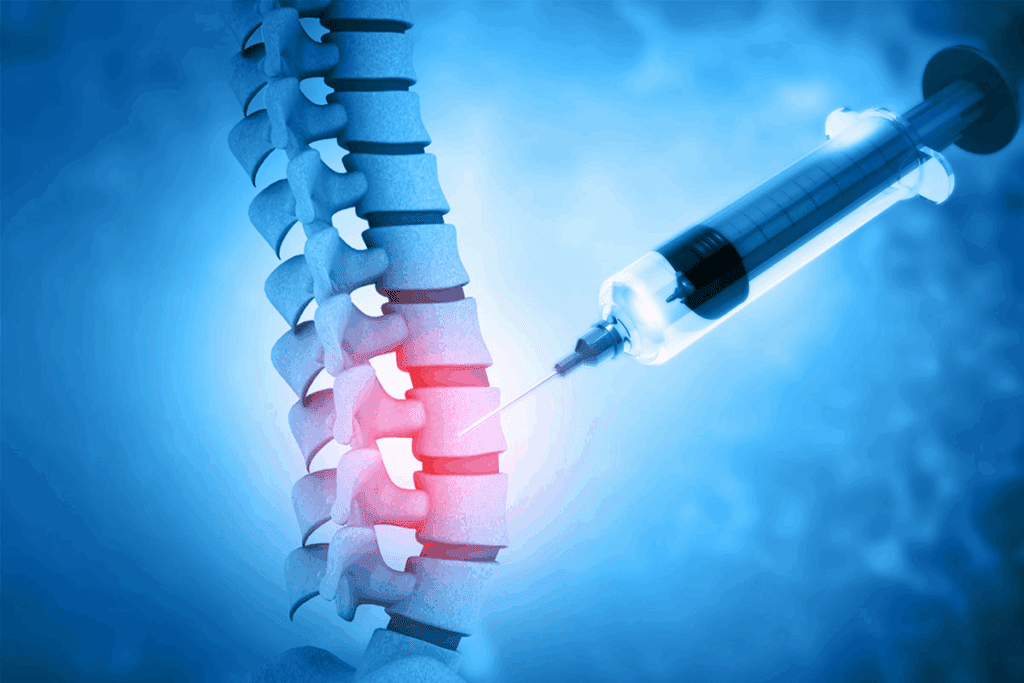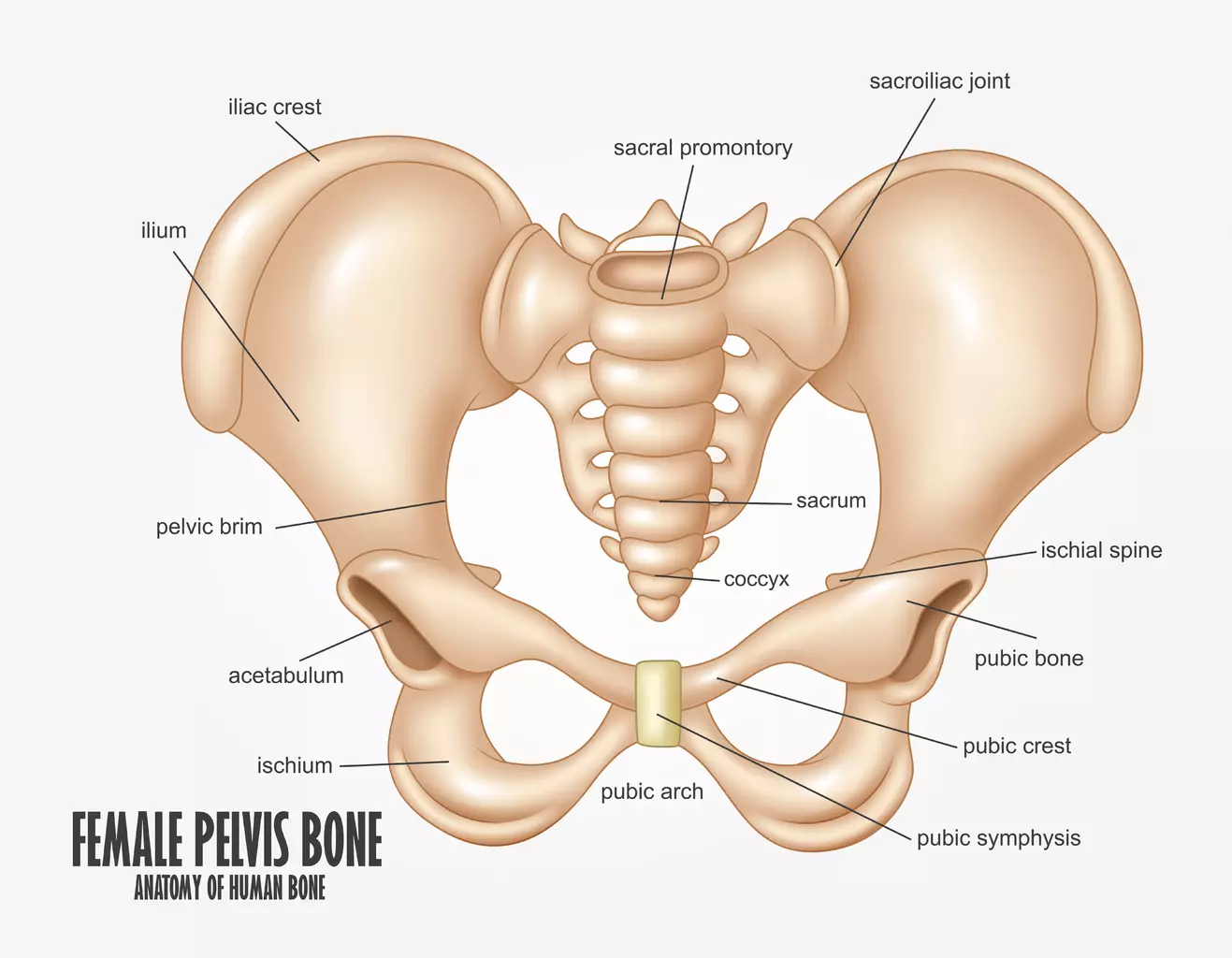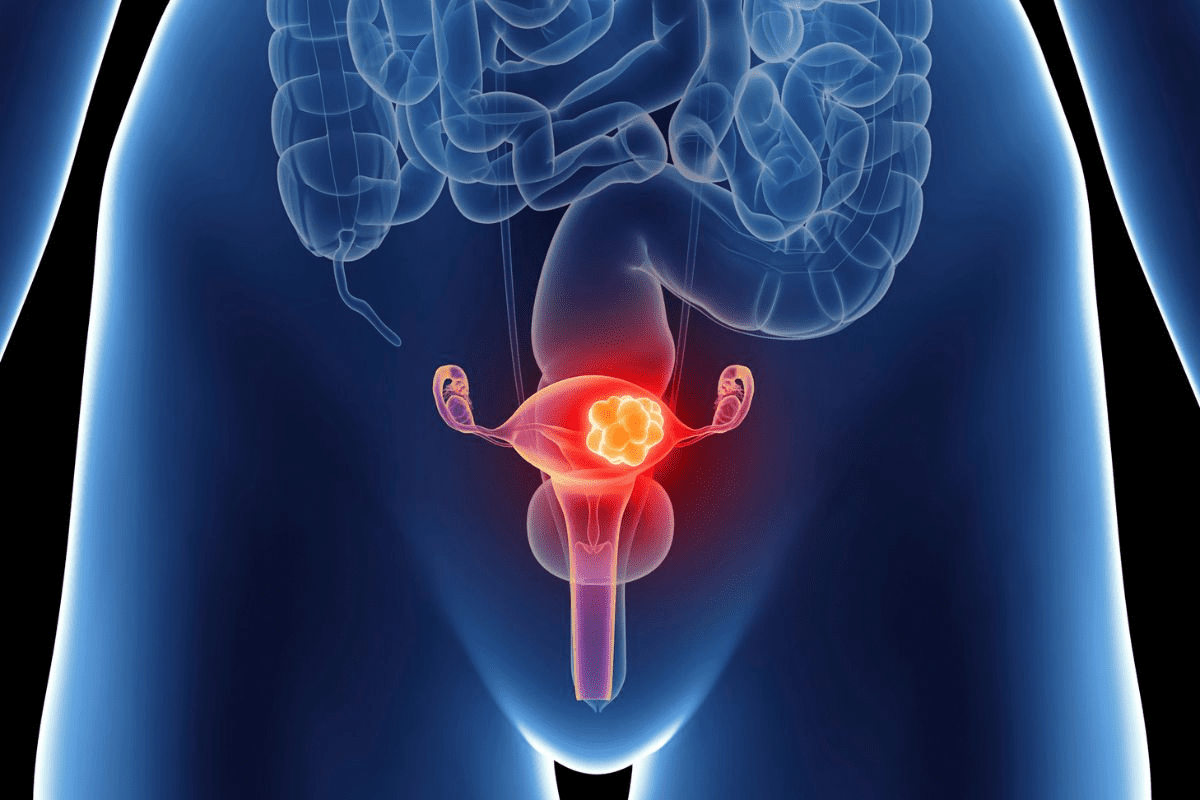Last Updated on November 26, 2025 by Bilal Hasdemir

If you’re dealing with ongoing lower back or nerve pain, knowing the difference between a cortisone shot and an epidural injection is key. It could help you find relief.
At Liv Hospital, we tailor every treatment to your needs. We aim to help you live an active, pain-free life with confidence.
Targeted approaches matter when it comes to managing pain and inflammation. Both cortisone and epidural injections help with pain. But they target different parts of the body.
We’ll look into the specific goals and areas these injections aim for. This will help you make better choices for your care.
Key Takeaways
- Understand the differences between cortisone and epidural injections for effective pain management.
- Learn about the distinct purposes and target areas of these injections.
- Discover how Liv Hospital’s specialists use evidence-based protocols for tailored treatments.
- Find out how targeted approaches can help you return to an active, pain-free life.
- Explore the benefits of cortisone and epidural injections for lower back and nerve pain.
Understanding Back Pain and Injection Therapies

It’s important to know what causes lower back and nerve pain to find the right treatment. Many people suffer from lower back pain at some point. This pain can come from injuries, long-term conditions, or how we live.
Common Causes of Lower Back and Nerve Pain
Several conditions lead to lower back and nerve pain. Herniated discs happen when the soft center of the disc leaks out, hurting nearby nerves. Spinal stenosis narrows the spinal canal, pressing on nerves. Sciatica irritates the sciatic nerve, causing a lot of pain.
“The complexity of lower back pain needs a detailed approach to diagnosis and treatment,” says a top pain management expert. “Knowing the exact cause of pain is vital for choosing the right therapy.”
When Injection Therapy Becomes Necessary
Injection therapy is considered when other treatments like physical therapy and medicine don’t work. Cortisone shots and epidural injections are common for managing pain. They help reduce inflammation and pain, letting patients get back to their daily activities.
The Role of Inflammation in Pain
Inflammation is a big factor in many lower back and nerve pains. When tissues are inflamed, they can irritate nerves, causing pain. Injection therapies, like those with corticosteroids, aim to lower this inflammation. This can greatly help patients by targeting the inflammation source.
In summary, knowing the causes of lower back and nerve pain is key to finding the best treatment. Injection therapies are a valuable option for pain that other treatments can’t fix.
What Are Cortisone Injections?

Cortisone shots, also known as steroid injections, help reduce pain and swelling in certain body areas. They are a key treatment for many musculoskeletal issues. They offer relief from pain and inflammation.
Composition and Mechanism of Action
Cortisone injections contain a corticosteroid like triamcinolone or methylprednisolone. These are strong anti-inflammatory agents. When injected, they cut down inflammation and swelling, easing pain.
Doctors say cortisone injections work well because they target the pain source directly. This makes them more effective than oral meds.
Target Areas for Cortisone Shots
Cortisone injections can be given in different body parts, such as:
- Joints (e.g., knees, hips, shoulders)
- Tendons
- Bursae
- Soft tissues around joints
The area treated depends on the condition. For example, epidural injections are for back pain. Joint injections help with arthritis.
Types of Conditions Treated
Cortisone injections help with many conditions, including:
- Osteoarthritis: Reduces joint pain and inflammation.
- Tendinitis: Relieves tendon inflammation.
- Bursitis: Decreases inflammation in the bursae.
- Rheumatoid Arthritis: Helps manage joint pain and swelling.
Medical experts say cortisone injections greatly help those with inflammatory conditions. They improve life quality. This is key for people whose daily life is affected by pain.
What Are Epidural Injections?
Epidural injections are a way to manage back pain. They put medication right next to the spinal cord and nerves. This targets the pain and swelling.
Understanding the Epidural Space
The epidural space is filled with fat. It’s between the bone and the sac that protects the spinal cord and nerves. This is where epidural injections are given to lessen swelling and ease nerve pressure.
Components of Epidural Steroid Injections
Epidural steroid injections have two main parts: a corticosteroid and a local anesthetic. The corticosteroid fights inflammation. The local anesthetic numbs the area, giving quick pain relief.
Types of Epidural Injections
There are different kinds of epidural injections. These include interlaminar, transforaminal, and caudal injections. Each targets a specific area of the spine to treat various back problems.
| Type of Epidural Injection | Description | Target Area |
| Interlaminar | Injects medication between the laminae of the vertebrae | Midline of the spine |
| Transforaminal | Delivers medication through the foramen where the nerve root exits | Specific nerve roots |
| Caudal | Injects medication into the caudal canal, accessing the epidural space through the sacral hiatus | Lower back region |
Knowing about the different epidural injections is key. It helps find the best treatment for back pain.
Cortisone vs Epidural: Key Differences Explained
Cortisone and epidural injections both aim to reduce pain and inflammation. But they work in different ways and have different effects. Knowing these differences helps choose the best treatment for back problems.
Anatomical Target Differences
Cortisone injections target specific areas of inflammation, like joints or soft tissues. They deliver a strong anti-inflammatory effect right to the pain source. Epidural injections, on the other hand, go into the epidural space around the spinal cord. They help with pain that spreads along nerve paths.
The places where cortisone and epidural injections are used are key. Cortisone is good for localized inflammation. Epidural injections are better for pain that travels along nerves.
Administration Techniques
How cortisone and epidural injections are given is different. Cortisone injections are straightforward, going directly into the affected area. Epidural injections need more care, as they go into the space around the spinal cord and nerves.
Key differences in administration techniques include:
- Precision and Guidance: Epidural injections often need fluoroscopic guidance for accurate placement.
- Injection Site Preparation: Getting ready for an epidural is more complex.
- Medication Delivery: The way medication is delivered is different, with epidurals using a catheter or special needle.
Medication Differences
The medicines in cortisone and epidural injections are different. Cortisone injections have corticosteroids, strong anti-inflammatory agents. Epidural injections may have corticosteroids and local anesthetics. This gives both anti-inflammatory effects and quick pain relief.
Choosing between these medicines depends on the patient’s condition and what they need. For example, corticosteroids in cortisone are good for inflammation. Epidural injections with both corticosteroids and local anesthetics are better for nerve pain.
Expected Outcomes for Different Pain Types
The results of cortisone and epidural injections vary based on the pain type. Cortisone is great for localized inflammation. Epidural injections work better for pain that spreads along nerves.
Expected outcomes for different pain types include:
- Localized Pain: Cortisone injections are more effective for pain in one area.
- Radicular Pain: Epidural injections are better for pain that spreads along nerves.
- Chronic vs. Acute Pain: The choice between cortisone and epidural injections also depends on whether the pain is chronic or acute.
How Doctors Determine the Right Injection for You
Choosing the right injection for pain relief is a detailed process. Doctors look at several important factors. They consider the patient’s condition and medical history to decide between cortisone and epidural injections.
Diagnostic Process and Imaging
The first step is the diagnostic process. Doctors use MRI or CT scans to find the cause of pain. These images show what’s causing the pain, like herniated discs or spinal stenosis.
With these images, doctors can pick the best injection therapy. This helps relieve the patient’s pain.
Considering Your Specific Condition
Each condition needs a different injection. Cortisone injections treat inflammation in areas like facet joints. Epidural injections target nerve compression or irritation.
Doctors look at the patient’s diagnosis to choose between injections. For example, someone with spinal stenosis might get an epidural. But a patient with facet joint syndrome might get a cortisone shot.
Previous Treatment Response
How a patient has reacted to injections is key. If a cortisone injection worked well before, it might be chosen again. But if it didn’t work, doctors might try something else.
If a patient didn’t respond to an injection, doctors might look at other options. This could mean trying a different injection or exploring other treatments.
Patient-Specific Factors
Each patient’s health and history matter too. For example, patients with diabetes or high blood pressure need special care. Doctors consider these factors when choosing an injection.
What the patient wants also plays a part. Doctors try to match the injection to what the patient needs and wants. This makes sure the treatment is right for each person.
The Procedure: What to Expect During Each Injection
Thinking about getting a cortisone or epidural injection? You might wonder what happens during the treatment. Both methods help with lower back and nerve pain but work in different ways.
Cortisone Injection Procedure
A cortisone injection happens in a doctor’s office or clinic. You’ll lie on your stomach or side, depending on the area treated. The skin gets cleaned with an antiseptic, and a local anesthetic might be used to numb you.
With X-ray guidance, the doctor will guide the needle to the right spot. This could be a joint or inflamed tissue. Then, they inject the cortisone medication.
The whole process takes about 15 to 30 minutes. This time can vary based on the injection’s complexity and your health.
Epidural Injection Procedure
An epidural steroid injection also takes place in a clinical setting. It starts with you lying on your stomach. The skin is cleaned, and a local anesthetic is given to reduce pain.
Under X-ray guidance, the doctor puts a needle into the epidural space. They then inject a steroid medication mixed with a local anesthetic. This helps reduce inflammation and pain.
This procedure usually lasts between 15 to 45 minutes. The exact time depends on your anatomy and the technique used.
Pain Management During the Procedure
Pain management is key for both injections. A local anesthetic numbs the skin and tissues at the injection site. You might feel a brief stinging when the anesthetic is given, but it’s short-lived.
We also use X-ray guidance to place the needle accurately. This reduces the risk of complications and makes the injection more effective.
Immediate Post-Procedure Experience
After the injection, you’ll be watched for a short time to check for any immediate reactions. Some people feel pain relief right away, while others might not notice it until a few days later.
Common immediate post-procedure experiences include:
- Mild soreness or discomfort at the injection site
- Temporary numbness or tingling in the affected area
- Relief from pain, which can be immediate or delayed
It’s important to follow your healthcare provider’s post-procedure instructions. This helps ensure the best results and minimizes side effects.
Effectiveness for Specific Back Conditions
Cortisone and epidural injections are common treatments for back pain. But, their success depends on the condition. We’ll look at how well they work for different back problems. This will help you choose the best treatment for you.
Herniated Discs
Epidural steroid injections are often better than cortisone for herniated discs. They target the area around the disc and nerves. Studies show they can greatly reduce pain and improve function.
Spinal Stenosis
Both cortisone and epidural injections help with spinal stenosis. But, epidural injections are preferred. They deliver medicine directly to the epidural space. This is more effective for the narrow spinal canal in spinal stenosis.
Sciatica and Radicular Pain
Sciatica and radicular pain come from irritated nerve roots. Epidural steroid injections are often used to treat these. They reduce inflammation around the nerves. Cortisone injections can also help, but epidural injections might be more effective.
Facet Joint Pain
Cortisone injections into the facet joint are very effective for facet joint pain. They deliver the medicine right to the pain source. While epidural injections can also help, cortisone injections are often preferred for this reason.
In conclusion, the success of cortisone and epidural injections varies by condition. Knowing these differences is key to finding the right treatment for you.
Potential Side Effects and Risks
Thinking about cortisone or epidural injections for back and nerve pain? It’s key to know the possible side effects and risks. These injections are usually safe and work well, but they can have complications like any medical treatment.
Common Side Effects of Cortisone Injections
Cortisone injections can have side effects. You might feel temporary pain or swelling where the shot was given. You could also see flushing or redness of the face.
Some people might see increased blood sugar levels, which is a worry for those with diabetes. Rarely, the area where the shot was given can get infected.
Risks Associated with Epidural Injections
Epidural steroid injections have their own risks and side effects. You might face nerve damage, bleeding, or infection at the injection site. Some people might feel a temporary increase in pain or headaches after the procedure.
Rarely, serious problems like dural tear or spinal cord injury can happen.
“The risk of serious complications from epidural steroid injections is low, but it’s essential for patients to be aware of the possible risks and talk about any worries with their healthcare provider.”
Long-term Considerations for Both Treatments
Using cortisone injections long-term can cause joint damage or osteoporosis because of how it affects bone density. For epidural injections, you might need to get them again to manage pain. The long-term safety and effectiveness of these repeated injections are being studied.
When to Seek Medical Attention After Injection
After getting a cortisone or epidural injection, watch how you feel. If you have severe pain, signs of infection (like fever or redness), or neurological symptoms (like numbness or weakness), get medical help right away. It’s important to follow up with your healthcare provider to see how the treatment is working and to talk about any worries.
Conclusion: Making an Informed Decision
Choosing between cortisone and epidural injections for lower back and nerve pain is a big decision. We’ve looked at the key differences between them. This includes what they’re made of, how they’re given, and what they can do for pain.
When you’re deciding between cortisone and epidural shots, talking to doctors is key. They can look at your condition and medical history. This helps them choose the best treatment for you.
Knowing the differences between epidural and cortisone shots helps you make better choices. You can talk to your doctor about the good and bad of each. This way, you can get a treatment plan that fits you best.
In the end, picking between cortisone and epidural shots depends on your situation. It’s best to get advice from medical experts.
FAQ
What is the main difference between a cortisone injection and an epidural injection?
Cortisone injections target specific joints or areas to reduce inflammation. Epidural injections, on the other hand, aim at the spinal cord’s epidural space. They’re used to treat pain related to spinal conditions.
Are cortisone shots and steroid shots the same?
Yes, they’re often called the same thing. Cortisone is a steroid used in injections to fight inflammation and pain.
Is a cortisone injection the same as an epidural steroid injection?
No, they’re not the same. Cortisone injections can be given in many body parts, like joints. Epidural steroid injections, though, are given around the spinal cord for specific spinal pain issues.
What conditions are effectively treated with cortisone injections?
They’re good for treating inflammation in conditions like arthritis, tendinitis, and bursitis. They also help with joint pain and inflammation.
What is the purpose of an epidural injection?
Epidural injections are for spinal pain, like from herniated discs or sciatica. They put medication in the epidural space to reduce pain and inflammation.
How do doctors determine whether a cortisone or epidural injection is more appropriate?
Doctors look at the patient’s condition, pain location, and past treatments. They also consider diagnostic imaging and a thorough evaluation.
What are the possible side effects of cortisone and epidural injections?
Side effects can include pain at the injection site and temporary high blood sugar. Rare but serious risks include infection and nerve damage. The risks vary between the two types of injections.
Can cortisone or epidural injections be used for long-term pain management?
These injections can offer relief but aren’t for long-term use. They can have side effects and lose effectiveness over time. They’re part of a broader treatment plan.
Is there a difference in the procedure for administering cortisone versus epidural injections?
Yes, the procedures differ. Cortisone injections are given in various locations, while epidural injections need precise placement in the epidural space, often with imaging guidance.
What can I expect during and after the injection procedure?
You might feel some discomfort during the procedure, but pain management helps. Afterward, you might feel sore, but it usually goes away quickly. Your doctor will tell you what to expect and how to manage any discomfort.
References
- StatPearls. (n.d.). Epidural Steroid Injections – StatPearls – NCBI Bookshelf. Retrieved from https://www.ncbi.nlm.nih.gov/books/NBK470189/






